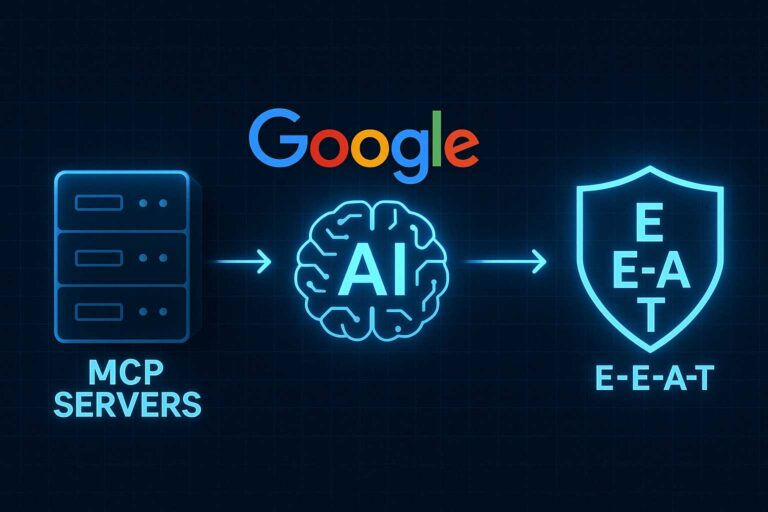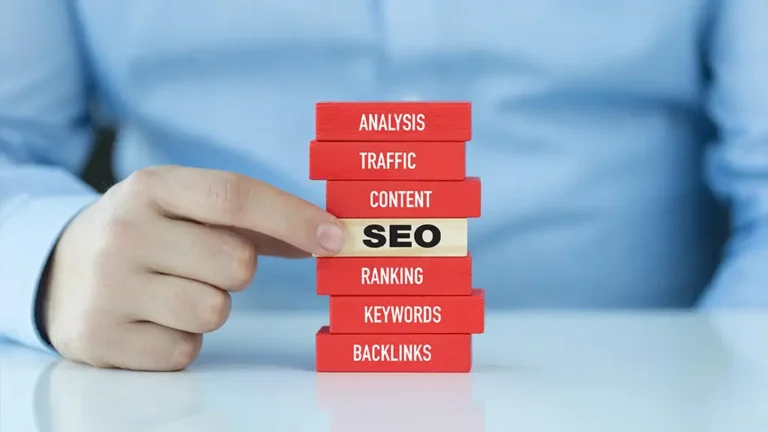How Long Does SEO Take to Work? A Clear Timeline for Businesses
Search engine optimization (SEO) is a powerful strategy for increasing visibility and driving organic traffic to your website. However, one of the most common questions businesses ask when starting an SEO campaign is, “How long will it take to see results?” The answer to this question isn’t straightforward. SEO is a long-term investment that requires consistent effort, patience, and proper execution. Unlike paid advertising where results are almost immediate, SEO takes time to work because it involves various factors, such as improving website structure, optimizing content, building backlinks, and aligning with search engine algorithms.
It’s important for businesses to understand that SEO results aren’t typically seen overnight. SEO is a gradual process that works incrementally, and the results often build up over time. While some minor improvements can be seen within the first few months, significant, long-lasting results often take anywhere from 6 to 12 months, depending on multiple factors like website age, competition, and the scope of the SEO campaign.
The key to setting realistic expectations for SEO is understanding that it’s a continuous effort. SEO isn’t a “set it and forget it” type of marketing tactic; it requires ongoing adjustments, content updates, and tracking to ensure your site stays competitive in the ever-changing search engine landscape. Businesses should expect to see some initial results in the form of technical improvements, but the real impact on rankings and traffic often takes a bit longer. If you’re seeking expert guidance to navigate this process effectively, working with a Best SEO agency can provide the expertise and support needed to optimize your efforts and see results faster.
Understanding SEO Timeframes
SEO results can vary greatly depending on several factors. However, there is a general timeline that can be expected for most businesses engaging in an SEO strategy. Typically, the results of an SEO campaign can be broken down into a few key stages over the first year.
First 3 Months:
In the first 3 months, businesses can expect to focus on foundational SEO elements. These include conducting an SEO audit, addressing technical SEO issues, improving website structure, optimizing meta tags, and starting to build quality content. During this phase, the website’s on-page SEO, such as keyword optimization, content structure, and user experience, will undergo improvements. These changes won’t typically lead to instant traffic or ranking improvements but will lay the groundwork for future success. Businesses will likely see some technical improvements in site speed, mobile optimization, and the crawlability of their pages, but significant changes in rankings won’t occur just yet.
3 to 6 Months:
As you move into the second quarter of your SEO strategy, the results should start becoming more visible. By this point, some initial keyword rankings may improve, and search engines will begin to acknowledge the updates you’ve made to your site. During this phase, businesses can start to see increased organic traffic, but they should not expect major spikes. The impact of the content and technical changes starts to show in the form of gradual ranking improvements. However, at this stage, it’s essential to continue optimizing content, updating old posts, and refining your link-building strategy to stay on track.
6 to 12 Months:
By the 6-month mark, businesses will see the most significant improvements. Websites that have consistently optimized content, added high-quality backlinks, and improved technical performance will start to see more noticeable increases in organic traffic and higher rankings. At this point, you may also see improved conversion rates as users begin to trust your site more and engage with your content. Depending on the competitiveness of your industry and the quality of your SEO efforts, it’s possible that your business may start ranking for more high-volume keywords, leading to a noticeable increase in organic leads and traffic.
While 6 to 12 months can produce significant results, it’s important to remember that SEO is ongoing. Even after this period, businesses should continue to monitor performance, tweak strategies, and stay up-to-date with new SEO trends. Search engines are constantly evolving, so maintaining good SEO practices is essential for continued growth.
Factors That Influence SEO Results
Several factors can impact how long it takes for SEO to produce results. These include the age of your website, the quality of your content, the level of competition in your industry, and how well you implement your SEO strategies.
For example, a newer website may take longer to see results because it doesn’t have the established authority that older websites have. A website that has been active for several years and has accumulated backlinks and social proof will often see quicker results than a newly launched site. Additionally, industries with high competition, such as finance or healthcare, typically require more time and effort to rank because there are more established players already targeting the same keywords.
For businesses aiming to improve their rankings and performance, working with a Best SEO agency can speed up the process. These agencies have the tools, expertise, and experience to help you implement best practices, monitor progress, and refine strategies to improve your SEO performance over time.
With proper execution, SEO can deliver consistent, long-term benefits for businesses looking to enhance their online visibility and drive more organic traffic. However, it’s essential to understand that SEO is a marathon, not a sprint. Patience, persistence, and continuous optimization will pay off over time.
The Role of Competition in SEO Timelines
One of the key factors that can significantly influence how long it takes for SEO to work is the level of competition in your industry or niche. The more competitive your market, the more effort will be required to see tangible results. In highly competitive industries, such as finance, health, and legal services, businesses may find it harder to rank higher in search results because they are competing against large, well-established brands with a high domain authority. These competitors likely have more backlinks, better content, and a long history of successful SEO efforts.
For businesses in competitive niches, SEO can take longer because it involves not only optimizing your own site but also outpacing the competition. Gaining rankings in a competitive space often requires more comprehensive strategies, such as investing in high-quality, authoritative backlinks, improving technical aspects of the site, and producing content that stands out from what competitors are offering. Businesses in these markets should plan for SEO to take more time, sometimes 12 months or more, to see significant changes in their search rankings and organic traffic.
To shorten this timeline, businesses can focus on niche keywords and specific subtopics that are less competitive. This strategy allows you to target keywords with lower competition, giving your business a better chance of ranking quickly. Once you’ve built your authority in these niche areas, you can expand your focus to more competitive keywords. Additionally, understanding what your competitors are doing and analyzing their content can provide valuable insights into what works and help you create more effective SEO strategies.
SEO Progress in the First 3 Months
In the first three months of an SEO campaign, the primary focus is on laying a strong foundation for long-term success. During this initial phase, businesses typically perform an SEO audit to identify technical issues that could impact search engine crawling and indexing. This might include fixing broken links, improving site speed, and ensuring that all pages are accessible to search engine bots. These fixes will not yield immediate traffic gains but are crucial for setting up a website that is optimized for SEO success.
Additionally, the first three months are spent addressing on-page SEO factors. This includes optimizing meta tags, headers, and keywords throughout the website’s content. Businesses may also begin creating or refining content to match search intent, ensuring that it is informative, engaging, and relevant to the target audience. Another essential element in this phase is ensuring that the website is mobile-friendly. With mobile-first indexing, Google now uses the mobile version of your site as the primary ranking factor, making mobile optimization a key component of any SEO strategy.
During this time, businesses should also start building a content plan for the upcoming months. This plan could include blogs, landing pages, or other resources that address specific customer needs or pain points. These pages should be optimized for relevant keywords and be structured to answer common user queries. While it’s too early to see significant changes in rankings or organic traffic, these early optimizations provide a solid foundation that will lead to improvements in the following months.
The 6-Month Milestone: Early Results and Adjustments
By the time you reach the six-month mark, businesses can begin to see early results from their SEO efforts. Depending on the scope and focus of the campaign, this might include some improvements in keyword rankings, increased organic traffic, and initial visibility in search engine results pages (SERPs). At this point, businesses may notice that certain pages are starting to rank for relevant keywords, and traffic from search engines is gradually increasing. However, SEO is still a long-term game, and businesses should not expect dramatic shifts in rankings just yet.
The six-month milestone is the ideal time to analyze what’s working and make adjustments. For example, if certain pages aren’t ranking as expected, it might be time to revisit the content and make it more comprehensive or improve keyword targeting. Analyzing user behavior through tools like Google Analytics can also provide insights into how visitors are interacting with your site. High bounce rates or low time-on-page statistics might indicate that your content isn’t resonating with users, which can be addressed through content optimization and better user engagement.
This phase also offers the opportunity to start focusing on off-page SEO factors, such as backlink building. By acquiring high-quality backlinks from authoritative sites, businesses can further improve their domain authority and increase their chances of ranking higher. During the first six months, many businesses also begin to focus on local SEO if they’re targeting a specific geographic area. This might include optimizing Google My Business profiles, collecting reviews, and building local citations to improve visibility in local search results.
Overall, the six-month mark is a critical point for evaluating SEO performance and refining strategies based on early results. At this stage, businesses can adjust their approach to continue building momentum and setting the stage for more significant growth in the following months.
The Importance of Content Strategy for Long-Term Results
A strong content strategy is one of the most important factors in achieving long-term SEO success. Quality content is not just about writing blog posts or creating landing pages—it’s about consistently offering value to users while aligning with what search engines prioritize. Over time, a well-executed content strategy helps improve organic rankings, increase traffic, and boost conversion rates. However, it’s important to understand that SEO content creation is a long-term game, and the results won’t be instant.
A key component of an effective content strategy is addressing user intent. Understanding the types of questions your target audience is asking and providing answers through informative, well-structured content is essential. For example, a business targeting users looking for “best coffee beans for espresso” should create detailed content around this keyword, including buying guides, product reviews, and expert recommendations. This content should not only address the keyword but also dive into related topics, giving users a comprehensive resource on the subject.
Additionally, a long-term content strategy should involve updating and optimizing older content. Search engines prefer fresh, relevant content, and updating older articles with new information or adding new sections can significantly improve rankings. Regularly refreshing content helps your website stay competitive and can drive more organic traffic over time.
Building content silos or clusters is another valuable strategy. Organizing content into topics or clusters around a main pillar page allows search engines to better understand your site’s structure and context. It also provides a better user experience by making it easier for visitors to find related content. For instance, an online retailer specializing in outdoor gear might create a pillar page on “Camping Essentials” and link to cluster pages covering specific camping gear like tents, sleeping bags, and backpacks. By creating a content plan that focuses on user intent, covering a variety of related subtopics, and keeping content fresh, businesses can lay the foundation for long-term SEO success.
How Backlinks Influence SEO Timelines
Backlinks are a key ranking factor for Google, and acquiring high-quality backlinks can significantly influence your website’s SEO performance. However, unlike other aspects of SEO, backlinks take time to build and show results. Backlinking is a gradual process, and while some links may bring instant improvements in rankings, others will take longer to show their full impact.
The quality of backlinks matters far more than the quantity. Backlinks from authoritative, relevant websites are much more valuable than links from low-quality or spammy sites. For example, a backlink from a trusted publication like The New York Times or a highly respected industry blog carries more weight than a link from an unrelated website. Google uses backlinks as a vote of confidence, signaling that your website is a trusted resource worth ranking higher.
Building backlinks is a time-consuming process that requires a proactive strategy. Businesses can acquire backlinks through methods like guest posting, broken link building, and outreach to industry influencers. It’s important to remember that acquiring backlinks should be done naturally and ethically. Using black-hat techniques such as buying links can result in penalties from Google and severely harm SEO performance.
Since backlinks don’t provide instant results, businesses should focus on steady, consistent link-building efforts. Over time, these high-quality backlinks will help improve domain authority, which in turn boosts the overall ranking of your website. Typically, it takes several months to see the results of link-building efforts, but once the link profile strengthens, it can lead to higher rankings, more traffic, and improved visibility in search results.
Tracking and Measuring SEO Success
To assess how long it takes SEO to work and to monitor ongoing performance, businesses must track key performance indicators (KPIs) and metrics. Tracking SEO progress helps identify what is working and where adjustments may be needed to improve rankings, increase traffic, and boost conversions. Regular tracking and measurement allow businesses to adapt and refine their SEO strategy to align with their goals.
Some important SEO metrics to track include organic traffic, keyword rankings, bounce rates, page load times, and conversion rates. Tools like Google Analytics, Google Search Console, and SEMrush can provide insights into how your site is performing. For example, if keyword rankings for specific pages are increasing, that signals that SEO efforts are positively impacting visibility. On the other hand, if certain pages aren’t ranking or if traffic has plateaued, adjustments may be needed in terms of content optimization, backlink strategies, or site technical improvements.
Organic traffic is one of the most important KPIs for SEO. By tracking how much traffic is coming to your site through organic search, you can evaluate whether your SEO efforts are driving the desired results. Along with organic traffic, you should track user engagement metrics such as bounce rates and average session duration. These metrics show how users are interacting with your content. High engagement rates typically indicate that the content is relevant and valuable to users, while high bounce rates may signal that the content is not meeting user expectations.
Conversion tracking is another key metric for evaluating SEO success. Ultimately, the goal of SEO is not just to drive traffic but to convert visitors into customers or leads. By monitoring how well organic visitors are converting—whether by making a purchase, filling out a contact form, or signing up for a newsletter—you can measure the ROI of your SEO efforts.
Long-Term SEO Strategies: Beyond Year 1
SEO is not a one-time effort, but a continuous process that requires ongoing optimization, monitoring, and adjustments. While significant improvements can be seen in the first year, businesses should plan for long-term SEO efforts beyond year one to maintain growth and stay ahead of competitors.
As search engines evolve and user behavior shifts, SEO strategies must adapt. This might mean updating older content, revising keyword strategies, or expanding into new types of content. Additionally, as more businesses invest in SEO, the competition for top rankings increases. To stay ahead, businesses should regularly evaluate their SEO strategy and stay up-to-date with the latest trends and algorithm updates.
Beyond the first year, SEO success also depends on the sustainability of your website’s content and backlink profile. It’s crucial to continue building high-quality content and acquiring backlinks to support and improve rankings over time. SEO is a marathon, not a sprint, and maintaining a steady effort is key to long-term success.
By committing to an ongoing SEO strategy and continuously adapting to changes in the industry, businesses can achieve sustained traffic, higher rankings, and increased conversions. With a robust plan for the future, SEO can provide significant, lasting value.

















